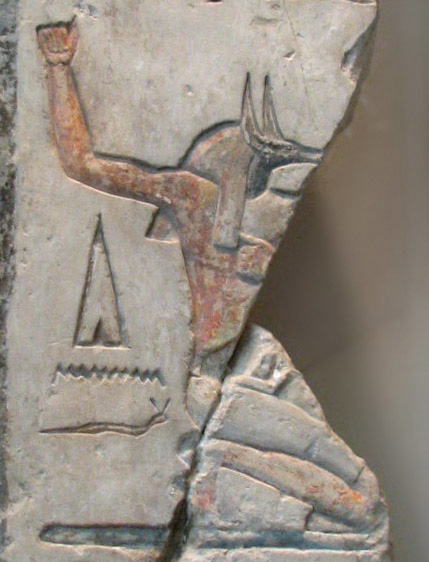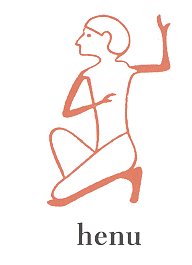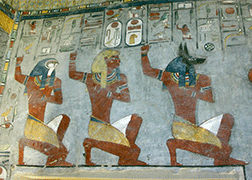(Adapted from info card at Met museum for 'Soul of Nekhen')
"This kneeling, falcon-headed deity represents one of the souls of Pe Dep (the double mounds of Buto), in the northern part of the Egyptian Delta. Their counterparts were the jackal-headed souls of Nekhen (Hierakonpolis), an important cult center in southern Egypt."

'Jackal Headed Soul of Nekhen'
"These divine creatures, whose roots seem to lie at the beginning of Egyptian history, served as protective powers representing the northern and southern boundaries of the country. The figure's kneeling pose and the placement of his arms are part of a ritual performance that accompanied the epiphany of Egyptian deities. In a pyramid temple it was doubtless the rejuvenated king who was addressed by this gesture of jubilation."

The jubilation pose is called 'henu'

Ramesses I between a Soul of Buto and a Soul of Nekhen
There's a scene similar to the Met's fragment in Ramsesses I's tomb. "In this scene, which celebrates the rejuvenation of the king's ba (*G53) or soul, the written henu hieroglyph is visible in the inscription above the figure next to the king and is clearly mirrored in the larger figures of the representation. The figures are, in fact, simply hieroglyphs made large. In a similar representation from the Eighteenth Dynasty temple at Buhen in Nubia, the falcon-headed gods of Pe are accompanied by an inscription which states 'May they give all life and power...(and) all stability which they have...,' showing that the gesturing figures could sometimes be symbolic of divine gifts." (Wilkinson, _Reading Egyptian Art_, page 17)
|


